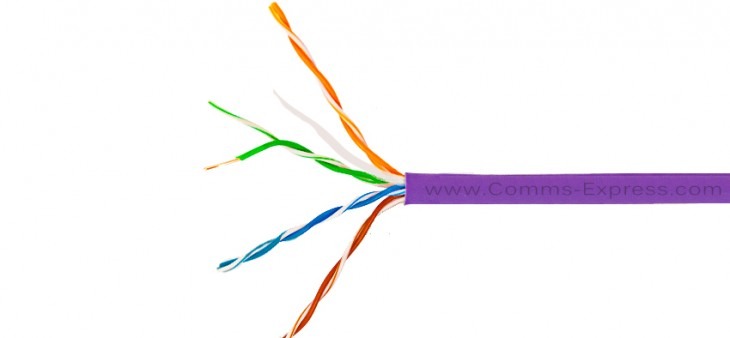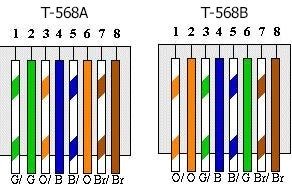
With industry input, the TIA/EIA cable standards have been developed by the Telecommunications Industry Association (TIA) and Electronic Industries Alliance (EIA). TIA/EIA-568 establishes widely employed telecommunications cable standards that support interoperability. The 568B standard sets minimum requirements for various categories of cabling. For example, Category 5e with performance up to 100 MHz and the capabilities for 10BASE-T, Fast Ethernet, and Gigabit Ethernet. However, the TIA/EIA requirements for Category 5e cable are higher than those of basic Cat5. Category 6 and Category 6a cables deliver performance up to 250 MHz with compatibility for 10BASE-T, Fast Ethernet, Gigabit Ethernet and 10 Gigabit Ethernet. Category 6a cable specifications address alien crosstalk issues.
Standards for Category 5e Cable
Part of the 568 standards for Category 5e cable and other twisted-pair cabling is the 568A and 568B wiring schemes which specify pin and pair assignments. The schemes define the process of UTP cable terminations. Each wiring pair corresponds to an assigned colour during terminations, as in pair 3 to the green on a patch panel or jack. Cat5e cable is connected using the 8P8C modular connectors with terminations in a T568A or T568B scheme.

The picture above highlights the pairings used in Category 5e standards.
TIA and EIA standards for Category 6 and 6a
TIA/EIA-568-B defines cable and connectors to be used in networks. The TIA and EIA standards for Category 6a cables support 10GBase-T networks. Like Cat5e, the Cat6 cables are usually terminated in 8P8C connectors. However, the wiring must be supported by patch cables, jacks and connectors that are also rated for the Category 6 TIA/EIA performance. At Comms Express, components are available which are compatible with the larger 6a cables.
Contact Comms Express for more enquires regarding patch lead standards, or to find a patch lead that meets your requirements.
